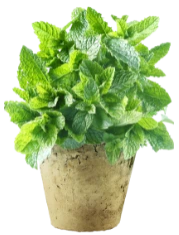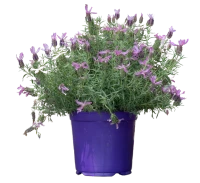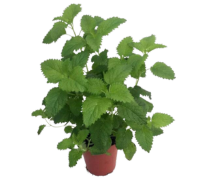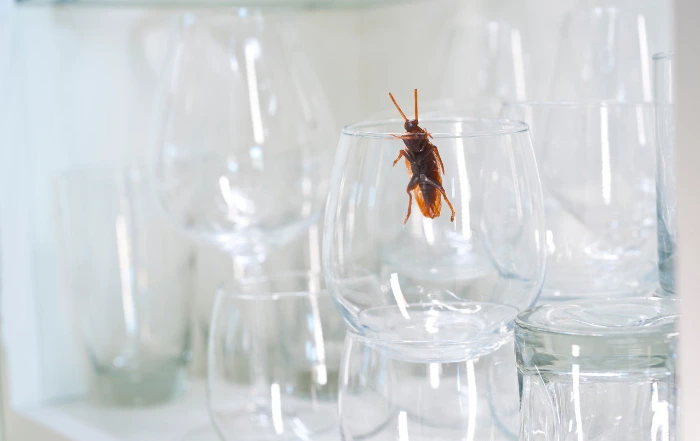Discover the natural secrets to keeping your home roach-free with these powerful plants! Picture this: you flick the lights on in your sanctuary, ready to unwind after a long day, only to be greeted by the sight of a skittering cockroach hastily scurrying away.
It’s an unwelcome intrusion, no doubt about it.
Roaches, those fast, resilient, and cunning pests, can turn our homes into battlegrounds if left unchecked. Their mere presence is not only unsettling, but also poses a threat to our health and well-being.
Why should you banish these unwanted visitors from your abode? Allow us to shed light on the compelling reasons. First and foremost, roaches are notorious carriers and spreaders of diseases, making them unwelcome guests in any household concerned with hygiene and cleanliness.
These resilient insects multiply rapidly, turning a minor inconvenience into a full-blown infestation in no time if given the right environment. From food contamination to triggering allergies and asthma, the consequences of roach infestations can be far-reaching and deeply unsettling.
While quick fixes and temporary solutions may offer temporary relief, a proactive approach is key to keeping roaches at bay for good. Imagine a natural, harmonious way to discourage these resilient pests from entering your living spaces. Here’s where the power of plants comes into play. By strategically introducing specific plants known for their roach-repelling properties, you can create an inhospitable environment that roaches simply cannot tolerate.
In this article, we unveil eight remarkable plants that not only enhance the aesthetic appeal of your home, but also serve as potent guardians against roach invasions. From the familiar fragrance of rosemary to the zesty allure of citronella, these natural defenders offer a multipronged approach to pest control, keeping your home bug-free without the need for harsh chemicals or artificial solutions.
So, join us on this horticultural journey as we explore the fascinating world of roach-repelling plants. From interesting facts to practical tips on growing and utilizing these plants, you’ll learn how to harness the power of nature to create an inviting, roach-free sanctuary that ensures peace of mind for you and your loved ones.
Say goodbye to roach-induced jitters and hello to a bug-free haven with the remarkable roach-repelling plants we’re about to unveil. Get ready to transform your home into an oasis where roaches fear to tread. Let’s dive in and discover nature’s secrets to safeguarding your space.
Rosemary

Did you know that rosemary has a long history of being associated with memory and remembrance?
Rosemary, a delightful herb used in cooking, possesses a fresh and woody aroma that is loved by humans but detested by roaches. Its leaves contain an oil that acts as a natural repellent, making it an excellent choice for keeping these pests away.
Place rosemary plants on windowsills or grow them outdoors in sunny and warm conditions. Ensure the soil is well-drained, and remember to water them regularly.
Interestingly, rosemary is non-toxic to cats and dogs, making it a safe addition to your home.
Bay Leaf

Did you know that bay leaves have been used in traditional medicine for their anti-inflammatory and antimicrobial properties?
Bay leaf, a versatile spice commonly used in cooking, releases a minty and menthol-like fragrance that roaches find overpowering. By growing a bay leaf tree indoors or outdoors, you can have a constant supply of leaves to use as a natural roach deterrent.
Provide the plant with sunny conditions, partial shade, and moist but well-drained soil. Prune it regularly to maintain its shape.
Please note that bay leaf is toxic to cats and dogs, so it’s best to avoid it if you have pets.
Mint

Did you know that mint has been used for centuries as a natural remedy for indigestion and an aid for digestion?
Mint, a familiar herb cherished for its refreshing qualities, not only adds a delightful flavor to our meals but also repels roaches with its strong scent. Peppermint, in particular, is highly effective due to its concentrated aroma. Mint is easy to grow both indoors and outdoors, but to prevent it from becoming invasive, it’s recommended to keep it in a container.
Place it in a sunny location with well-drained soil and provide regular water.
You can also use peppermint oil, diluted with water, to spray around your home for added roach repellence.
Mint is toxic to cats and dogs, so take precautions if you have pets.
Lavender

Did you know that lavender has been used for centuries to promote relaxation, reduce anxiety, and improve sleep?
Lavender, known for its gentle and floral scent, is widely used in cleaning products and fragrances. While its fragrance may be delicate to us, roaches find it repulsive. Placing bunches of lavender around your home can actively deter these pests.
Lavender thrives in full sun and warm, dry conditions with well-drained soil. You can also enhance its effectiveness by using lavender oil, diluted and sprayed around the house.
Remember, lavender is toxic to cats and dogs, so take care if you have pets.
Catnip

Did you know that catnip is a member of the mint family and shares similar characteristics with other mint plants?
Catnip, famous for its ability to attract and excite cats, has an entirely different effect on roaches. It contains a chemical called nepetalactone, which actively repels roaches, flies, and mosquitoes. Growing catnip indoors or outdoors requires at least six hours of sunlight daily and well-drained soil. To prevent it from spreading, keep it in a container and prune it regularly.
Despite its appeal to cats, fresh catnip is toxic to them, so ensure it’s kept away from your feline friends.
Lemongrass

Did you know that lemongrass has been used in traditional medicine for its antimicrobial, anti-inflammatory, and analgesic properties?
Lemongrass, renowned for its medicinal benefits and citrusy aroma, can also help keep roaches at bay. Roaches dislike the overwhelming scent of citronella oil present in lemongrass leaves, which is commonly used to repel flies, mosquitoes, mice, and even snakes. To grow lemongrass successfully, provide it with a hot climate, full sun, and well-drained soil.
In colder months, consider bringing it indoors. Remember that lemongrass is toxic to cats and dogs, so take precautions if you have pets.
Chrysanthemums

Did you know that chrysanthemums have been cultivated in China for over 2,500 years and are considered a symbol of autumn?
Chrysanthemums, beloved for their vibrant colors and decorative appeal, are not only pleasing to the eye but also effective at repelling roaches. Some varieties of chrysanthemums contain pyrethrins, natural compounds commonly used in insecticides to repel a wide range of bugs.
These plants prefer at least six hours of sunlight, regular watering, and well-drained soil.
However, they are toxic to cats and dogs, so opt for alternatives if you have pets.
Citronella

Did you know that citronella oil is commonly used in candles and torches to repel mosquitoes?
Citronella, known for its strong and distinct lemon-like fragrance, is highly effective at repelling not only mosquitoes but also roaches. The aroma of citronella is overwhelming to roaches, making it an excellent natural deterrent. Citronella plants can be grown in pots or planted directly in the ground, as long as they receive full sun and well-drained soil. They require regular watering to thrive. It’s important to note that citronella plants are non-toxic to cats and dogs, making them a safe option for pet owners.
By adding citronella to your list of roach-repelling plants, you can enhance the pest control measures in your home while enjoying the refreshing scent of this versatile plant.
Let's Wrap This Up!
Congratulations! You are now armed with the knowledge of eight remarkable plants that can help keep roaches at bay and transform your home into a bug-free sanctuary. By harnessing the power of nature, you can bid farewell to the unwelcome presence of roaches and embrace a healthier, more harmonious living environment.
Remember, these plants offer a natural and eco-friendly alternative to chemical-laden pest control methods.
Not only do they repel roaches effectively, but they also add beauty, fragrance, and a touch of nature to your living spaces.
From the versatile rosemary to the soothing lavender, each plant brings its unique qualities and benefits beyond pest deterrence.
As you embark on your journey of incorporating these plants into your home, keep in mind their specific care requirements, such as sunlight, water, and soil conditions.
More To Discover
Whether you choose to cultivate them indoors or outdoors, in pots or gardens, these plants can thrive and provide ongoing protection against roach infestations.
Additionally, remember to exercise caution if you have pets, as some of these plants can be toxic to cats and dogs. In such cases, opt for pet-friendly alternatives or take appropriate measures to ensure your furry friends’ safety.
With a little bit of effort and a green thumb, you can establish a natural defense system against roaches while creating a more inviting and harmonious living space. Embrace the power of these roach-repelling plants as guardians of your home and experience the peace of mind that comes with a bug-free environment.
So, let’s get started! Explore the world of botanical guardians and embark on your journey toward a roach-free home. Enjoy the beauty, fragrance, and added benefits these plants bring while keeping those pesky roaches at bay. Say goodbye to unwelcome surprises and hello to a harmonious, pest-free haven. Your home deserves nothing less than the best, and with these plants, you can achieve just that.
Here’s to a future filled with natural protection, tranquility, and the joy of a bug-free existence. Happy gardening and may your home thrive in its newfound roach-free glory!



















